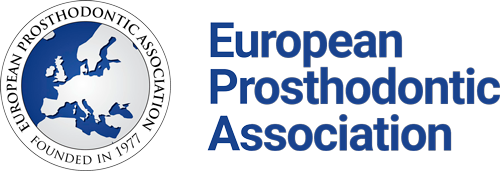EPA in Europe
The association was founded in 1976 and it was felt that there was a need for a specialist association to develop an understanding and improve communication in the field of Prosthodontics among European countries.
It was felt that this would hugely improve the delivery and specialism of Prosthodontics in Europe and would benefit patient care in this field.
The first meeting of the EPA was held in London in 1977 and at the time, 122 delegates attended it.From such humble beginnings, the EPA currently has in excess of 700 members from 50 countries from all over the world. The annual conference is the main feature of the EPA and this is held in various European countries.
What is Prosthodontics?
Prosthodontics is one of the branches of dentistry that deals with the replacement of missing teeth and the associated soft and hard tissues by prostheses (crowns, bridges, dentures) which may be fixed or removable, or may be supported and retained by implants.
A Prosthodontist is a specialist dentist who deals with the replacement of missing teeth and related mouth or jaw structures by bridges, dentures or prostheses. They receive an additional three years of training after dental school to specialize in this field.
Prosthodontics is a broad specialty and the subspecialties are:
Fixed Prosthodontics
Fixed Prosthodontics is the branch of Prosthodontics that deals with restoration of teeth using crowns, bridges, onlays, inlays and veneers. All of the above mentioned restorations are made in the dental laboratory on an impression of the mouth made by the Prosthodontist.
The tooth/teeth are prepared by the Prosthodontist and an impression is made to capture this preparation which is then sent to the laboratory along with a detailed prescription.
The dental technician then fabricates the desired restoration as per the prescription. The finished product is then cemented in the mouth using various cements.
Crown
This is commonly referred as a ‘cap’ and covers part of or the complete tooth. Different materials can be used to make the crown depending on the requirements such as function/aesthetics, patient preference and the condition of the tooth.
Bridge
This is a dental restoration used to replace a ‘gap’ due to missing tooth/teeth. The adjacent tooth/teeth are used to hang the bridge. Several designs and materials are used for bridge fabrication depending on the size of the gap, aesthetics and function.
Removable Prosthodontics
Removable prosthodontics is concerned with prosthesis which replace the soft tissues and teeth and are more commonly referred to as dentures.
These can be replacing all of the missing teeth (Complete dentures) or may be replacing some of the teeth (Partial dentures). Both of them can be replacing either the upper or lower arch or both. They can be solely made of plastic (acrylic) or can be made of a combination of metal and plastic.
Fabrication of these prosthesis can take up to six visits or more and involves both clinic and laboratory steps. Prosthodontists take years to specialise in this field and require considerable experience on the part of both the clinician and the technician to obtain a predictable outcome.
Maxillofacial Prosthodontics
Maxillofacial Prosthodontics is concerned with the rehabilitation of patients with congenital or acquired defects in the mouth or face. Congenital defects usually relate to cleft lip and palate. Acquired defects usually are due to cancer of the mouth or face and due to neurological defects such as stroke.
The prosthesis fabricated tends to fill up these defects. They are typically in the mouth and may include prosthesis such as Obturators, Speech bulbs, Palatal lifts, Palatal augmentation device to name a few; however this branch also includes facial prosthesis like eye, ear, nose, facial, and other body parts like fingers, hands etc.
Maxillofacial prosthodontists are highly skilled prosthodontist who have advanced training in complex oral rehabilitation. They carry these treatments in a multi-disciplinary team usually consisting of maxillofacial surgeons, ENT surgeons, Plastic surgeons, neurosurgeons, speech and language pathologists and Clinical Oncologists. The overarching principle is to improve the quality of life of patients.
Dental implants
A dental implant is an artificial device usually made of titanium or titanium alloys.
It is a substitute for the root of a tooth and is generally shaped as a screw or cylinder. A successful implant provides a stable and rigid structure for retention or support of a bridge, denture or a maxillofacial prosthesis.
Placed properly, implants have a high success rate and have high patient satisfaction with their use. They have to be placed with dentist who have acquired further competencies. The planning process for placement of implants is highly crucial and needs to be comprehensive for a successful outcome.

